Things You Need to Know: Ferdinand Magellan's Deadly Voyage
9th July 2021
“The Church says that the Earth is flat, but I know that it is round. For I have seen the shadow of the earth on the moon and I have more faith in the Shadow than in the Church.”
– Ferdinand Magellan
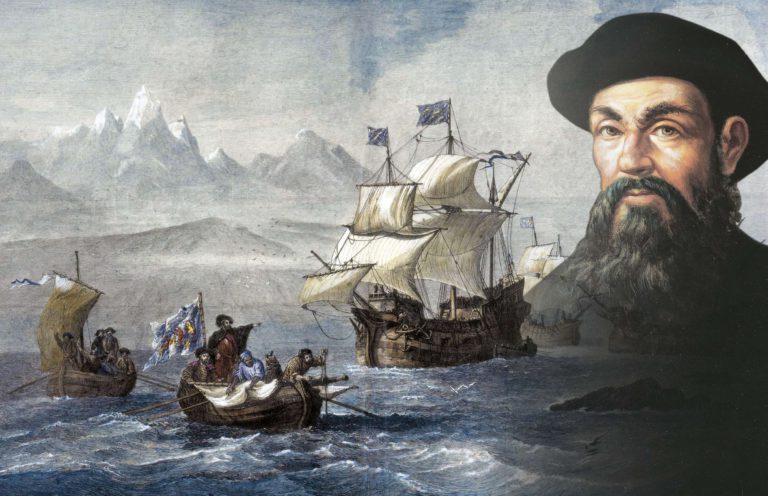
If Magellan wasn’t the first person to circle the globe, then who was? Opinions differ, but many historians give the honor to Magellan’s Malay slave, Enrique. Magellan had seized Enrique from Malacca during an earlier 1511 voyage to the East Indies, and the Malay later served as the round-the-world expedition’s interpreter in the Pacific islands. Enrique had previously traveled west with Magellan from Asia to Europe before joining in the voyage across the Atlantic and Pacific, so by the time the mission reached Southeast Asia, he had very nearly circled the globe and returned to his homeland—albeit over the course of several years and multiple voyages. Enrique abandoned the expedition and disappeared shortly after Magellan’s death in the Philippines. By then, he was only a few hundred miles short of his point of origin in Malacca. If he ever returned to his homeland, then Enrique may deserve the true credit for being the first person to circumnavigate globe.
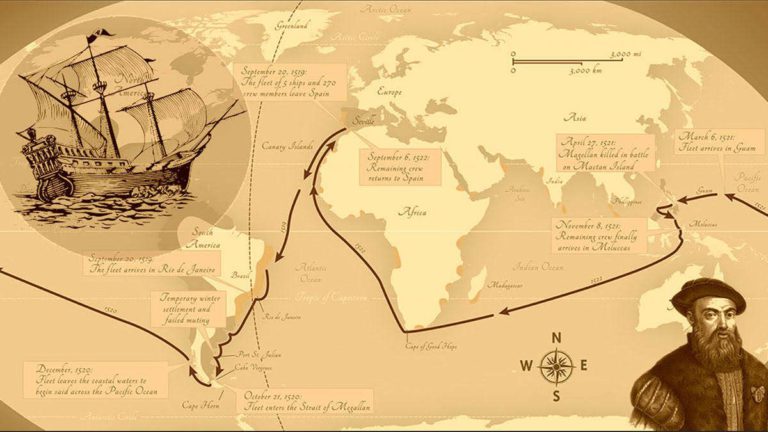
The Portuguese explorer Ferdinand Magellan is often credited as being the first person to have circumnavigated the globe, but the reality of his journey is a bit more complicated. Magellan first set sail in September 1519 as part of an epic attempt to find a western route to the spice-rich East Indies in modern-day Indonesia. While he successfully led his crew across the Atlantic, through a strait in southern South America and over the vast expanse of the Pacific, he was killed only halfway through the circuit in a skirmish with natives on the Philippine island of Mactan. Magellan’s death meant that he personally failed to circle the world, but his expedition continued on without him. In September 1522, one of his ships arrived safely back in Spain having completed a successful circumnavigation of the globe. Of the mission’s 260 original crewmen, only 18 had survived the perilous three-year journey.
Magellan’s expedition claimed to have encountered giants in South America.
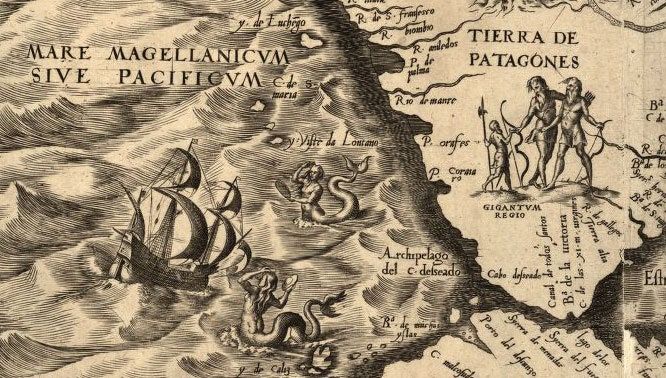
In 1520, Ferdinand Magellan took time out of his busy schedule of sailing around the world to stop in what is now Patagonia, where he found a naked giant dancing and singing on the shore. Magellan ordered one of his men to make contact (the unwitting emissary’s no doubt hilarious reaction to this sadly has been lost to history), and to be sure to reciprocate the dancing and singing to demonstrate friendship.
While anchored near modern-day Argentina, Magellan’s men reported encountering 8-foot-tall men on the beaches of Patagonia. After befriending these “giants,” Magellan supposedly tricked them into boarding his ship and took one of the men captive. The giant was later baptized and named Paul, but died during the fleet’s long crossing of the Pacific Ocean. Historians have surmised that Magellan’s giants were in actuality members of the Tehuelche, a naturally tall tribe of Indians native to southern Chile and Argentina. While Magellan’s men almost certainly exaggerated the height of the Tehuelche, the myth of Patagonian giants would persist for many years.
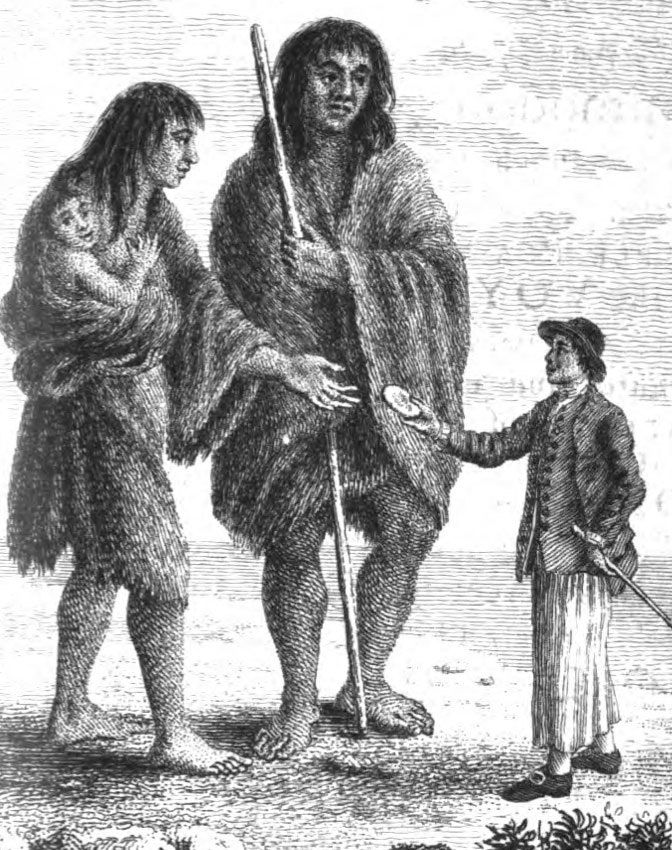
The first mention of the giants, supposedly twice the height of the normal human being, appeared in the Italian chronicler Antonio Pigafetta’s account of Ferdinand Magellan’s travels. This official record reported that Magellan’s crew got more than they bargained for during their circumnavigation of the globe in the 1520s. Pigafetta details a dancing and leaping giant on the shores of Argentina. Not one to take all the glory for himself, Magellan selflessly sent a poor crew member over to the gallivanting giant to make contact.
The giant was reportedly very friendly, and so colossally tall that the Europeans only reached his waist. Magellan named them ‘patagones ’, and many believe this to have come from the Portuguese word ‘pata’, meaning ‘foot’. Magellan captured two of these giants to take back to Spain with him, but they sadly died on the homeward voyage.
Magellan only deserves partial credit for the circumnavigation.
Magellan is often cited as the first explorer to have circumnavigated the globe, but this is not technically true. While he organized the voyage and negotiated the treacherous South American strait and the crossing of the Pacific, Magellan was killed before the mission ever reached the Spice Islands. Credit for the successful circumnavigation of the globe should also go to the Basque mariner Juan Sebastian Elcano, who commanded the return voyage of Victoria—the only surviving vessel—from late 1521 until its arrival in Spain in September 1522.
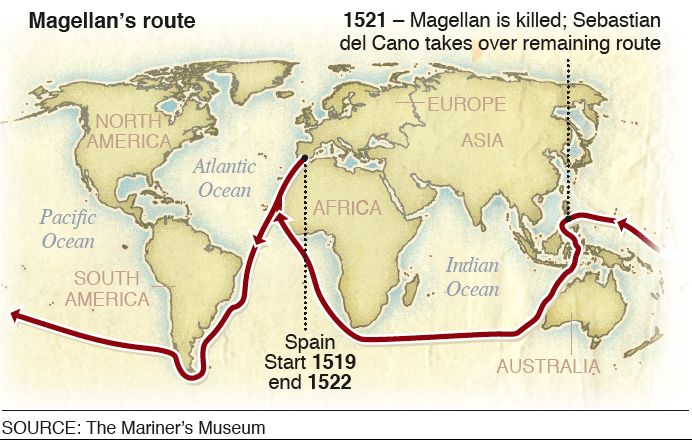
Many of Magellan’s crew mutinied or deserted the expedition.
Magellan’s mostly Spanish crew resented the idea of being led by a Portuguese captain, and the expedition was forced to weather two mutinies before it had even reached the Pacific. The first of these failed revolts was easily unraveled, but the second proved more elaborate. Worried that Magellan’s obsession with finding passage to the Pacific was going to doom the expedition, in April 1520 three of his five ships turned against him. Magellan and his supporters ultimately thwarted the revolt, and he even marooned two men on an island when he found they were planning a third mutiny. The rebellions continued later that year when the vessel San Antonio deserted the fleet and prematurely returned to Spain.
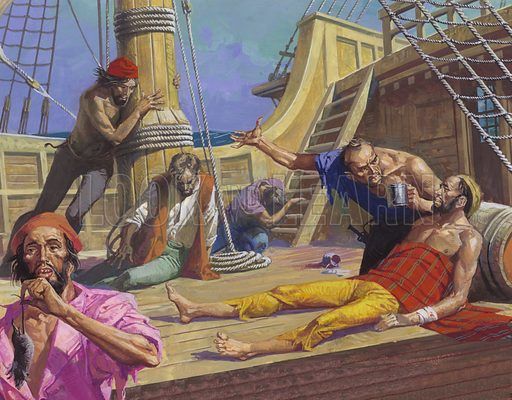
Pifagetta wrote:
We ate only old biscuit turned to powder, all full of worms and stinking of the urine which the rats had made on it, having eaten the good. And we drank water impure and yellow. We ate also ox hides which were very hard because of the sun, rain, and wind. And we left them four or five days in the sea, then laid them for a short time on embers, and so we ate them. And of the rats, which were sold for half an écu apiece, some of us could not get enough.
Thirty men died of scurvy alone; dozens of others starved to death. Though he had succeeded doing something that no one else had ever done—the combined journeys he made to both the east and the west over his lifetime amounted to a full circumnavigation—he was decried for his treatment of the crew.
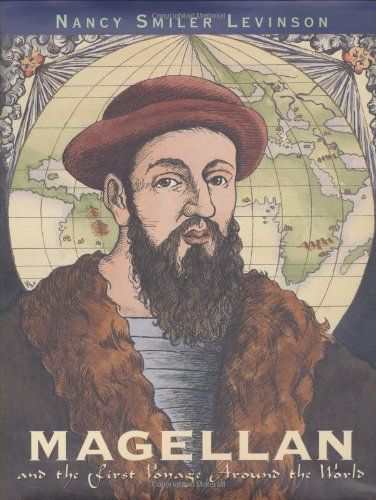
Impact of Ferdinand Magellan
Seeking riches and personal glory, Magellan’s daring and ambitious voyage around the world provided the Europeans with far more than just spices. Although the trip westward from Europe to the east via the Strait of Magellan had been discovered and mapped, the journey was too long and dangerous to become a practical route to the Spice Islands. Nevertheless, European geographic knowledge was expanded immeasurably by Magellan’s expedition. He found not only a massive ocean, hitherto unknown to Europeans, but he also discovered that the earth was much larger than previously thought. Finally, although it was no longer believed that the earth was flat at this stage in history, Magellan’s circumnavigation of the globe empirically discredited the medieval theory conclusively.
Though Magellan is often credited with the first circumnavigation on the globe, he did so on a technicality: He first made a trip from Europe to the Spice Islands, eastward via the Indian Ocean, and then later made his famous westward voyage that brought him to the Philippines. So he did cover the entire terrain, but it was not a strict point A to point A, round-the-world trip, and it was made in two different directions. His slave, Enrique, however, was born in either Cebu or Mallaca and came to Europe with Magellan by ship. Ten years later, he then returned to both Cebu (with Magellan) and Mallaca (after Magellan died) by ship on the armada’s westward route. So Enrique was the first person to circumnavigate the world in one direction, from point A to point A.
Credit and Resources:
- history.com topics Exploration Ferdinand Magellan
- wired.com 2014 Fantastically Wrong Giants of Patagonia
